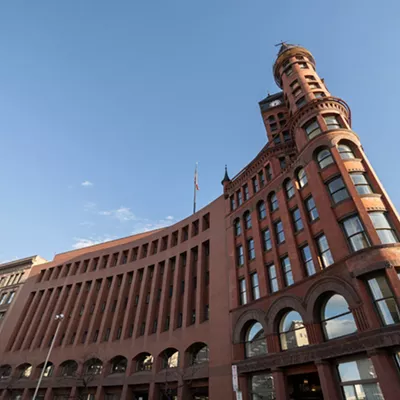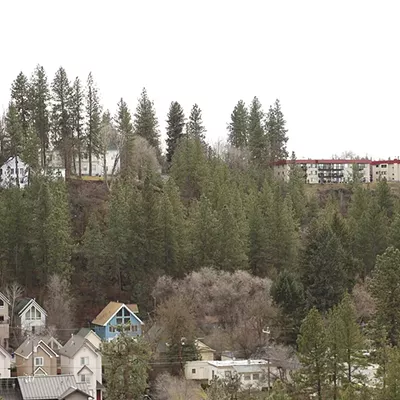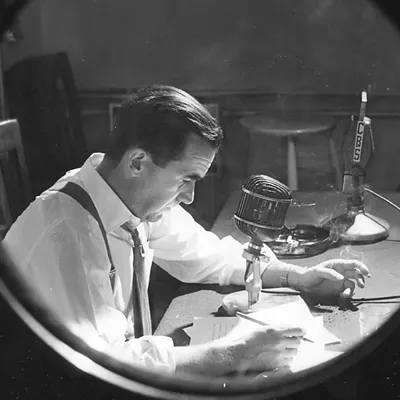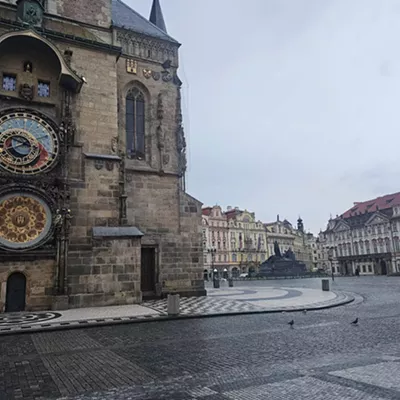Geraghty, as his bad luck would have it, happened on the mayoral scene at the time of the River Park Square blowup and the Lincoln Street Bridge fiasco. He failed to extricate himself from either political debacle. His analysis flows out of his experience and invites several questions: Did the issues which dragged him down involve the skeptics winning out over the progressives? Did the have-nots once again foil the best intentions of the haves? Were these Chris Peck's "naysayers," to use the former Spokesman-Review editor's shorthand term?
Mayor Geraghty identifies "progressives" with our community's "haves." No doubt about that; but, are they necessarily "progressive?" Only, it seems to me, if "doing right by doing well," is held to be synonymous with the term. I don't think it is. We usually identify progressives as those "men of good hope," reformers who didn't share in the post-Civil War notions of private property rights, who sought government regulation, and who rejected survival of the fittest. Geraghty refers not to these impulses but rather to special interests whose idea of good government reform begins and ends with skid greasing and lower taxes.
It is possible to oppose unrestricted development and be very progressive, given the more typical definition. To illustrate, a different reading of the Hession-Verner political fault line has Verner doing better among voters whom I describe as "urbanist residents," those working and middle-class voters who live in our older, inner-city neighborhoods and who see their marketplace as the downtown. Right away, we see the class theory fall apart. The operative word is "voters." The serious have-nots, as former mayoral candidate Al French found out, don't vote.
While Mayor Hession does enjoy a sizeable base of "friends and neighbors" support, he is getting his big money from the "suburban sprawl" advocates, the "haves," Geraghty's "progressives." Hession counts more than 70 donations of $1,000 or more from this constituency. In stark contrast, especially for a candidate who lost by only 300 votes in the primary, Councilwoman Verner can count only around 20 donations of $1,000 or more.
To illustrate the political import of these two dramatically different patterns, imagine an advisory vote on the wisdom and legitimacy of growth management. How do you think it would turn out? I bet that we would see the identical voting pattern we saw in the primary. Those who favor growth management would vote for Verner. Mayor Hession's support would come from those who don't see urban sprawl as a threat; rather, they view it as supportive of "private property" rights and critical to economic growth. It would then follow that Verner's supporters would likely also favor the Portland priorities: pedestrians first, followed by public transportation and the automobile. Those who support Hession would be more likely want to reverse these priorities. This is important stuff.
Verner's campaign, it must be said, hasn't exactly been a model of clarity on these issues. Her urbanist supporters are taking her on faith -- plus they know that she isn't Dennis Hession. They are responding to Hession's well-advertised 22-month record which saw him summarily ignore two important and unanimously passed Neighborhood Council resolutions opposing the Bernard Street project as proposed. Effectively, Hession announced to one and all that he had other political fish to fry than the preservation of older neighborhoods. And the general neighborhood response throughout the city? If, as an appointed mayor, he would do it to them yesterday, what might he, as an elected mayor, have in store for us tomorrow?
& lt;span class= & quot;dropcap & quot; & T & lt;/span & he Brad Stark-Richard Rush City Council contest is even more illustrative. Stark has obviously convinced Geraghty's "progressives" that he is their man. Rush, to the contrary, has embraced growth management. The money trails run down either side of this political fault line. While Rush's fundraising has been surprisingly effective for a challenger, he remains upwards of $10,000 behind the incumbent. What's more important, I think, are the differences in the respective patterns of support. Consider: Rush reports only two contributions of $1,000 or more; Stark counts a dozen. By taking his message to the voters in his district's older neighborhoods, Rush has been able to counter if not match Stark's high-end "progressive" donations. Rush's voters aren't the have-nots; instead, they are voters more likely to favor growth management and the Portland priorities. They are voters who see Stark as politically defined by his pattern of contributions.
We fail to understand the import of all this unless we refocus the debate onto what's really at stake in this election. It isn't whether the haves will win out over the have- nots; it's not whether the naysayers will once again stop progress. We are debating the meaning of the words Daniel Kemmis, former mayor of Missoula, used to title his book: "The Good City and the Good Life."


















